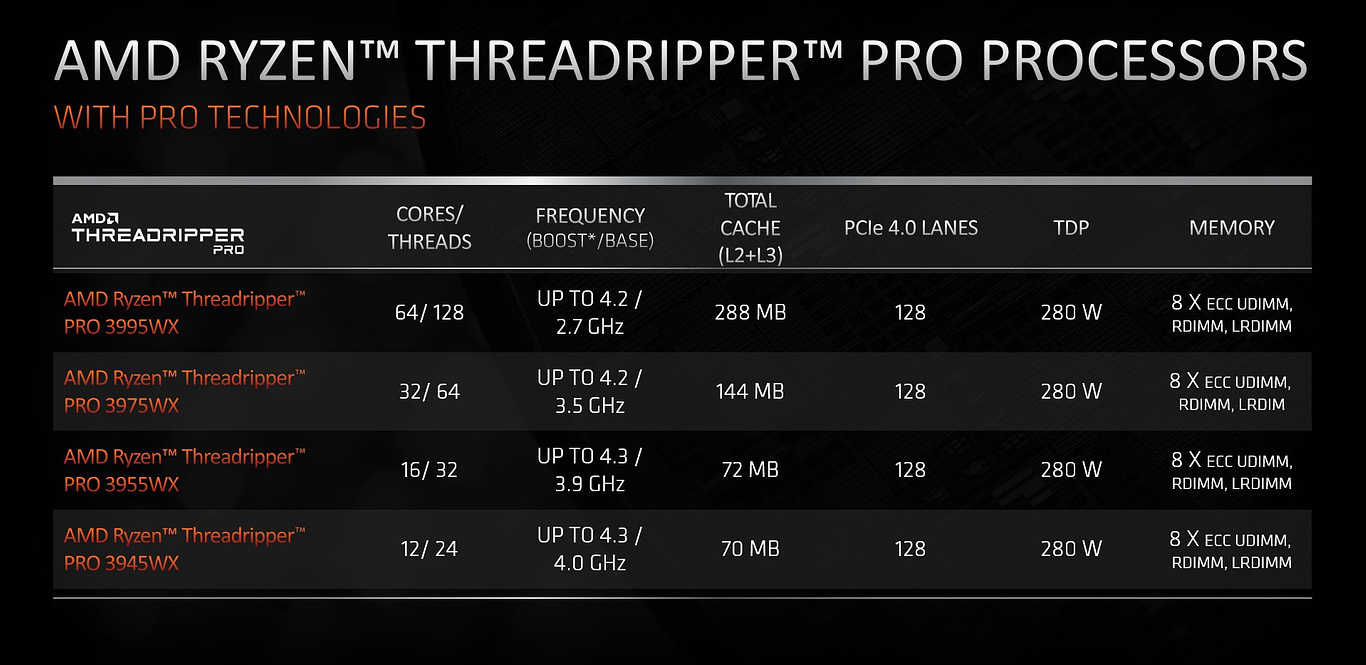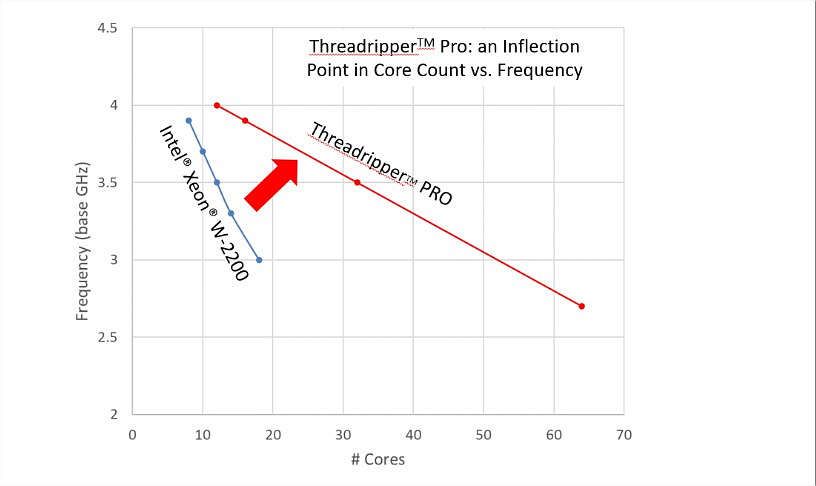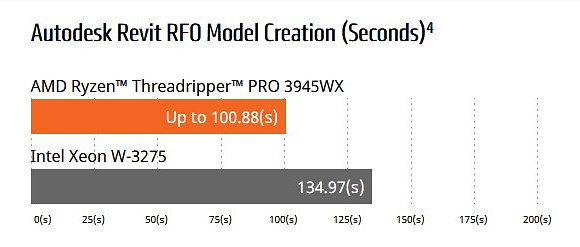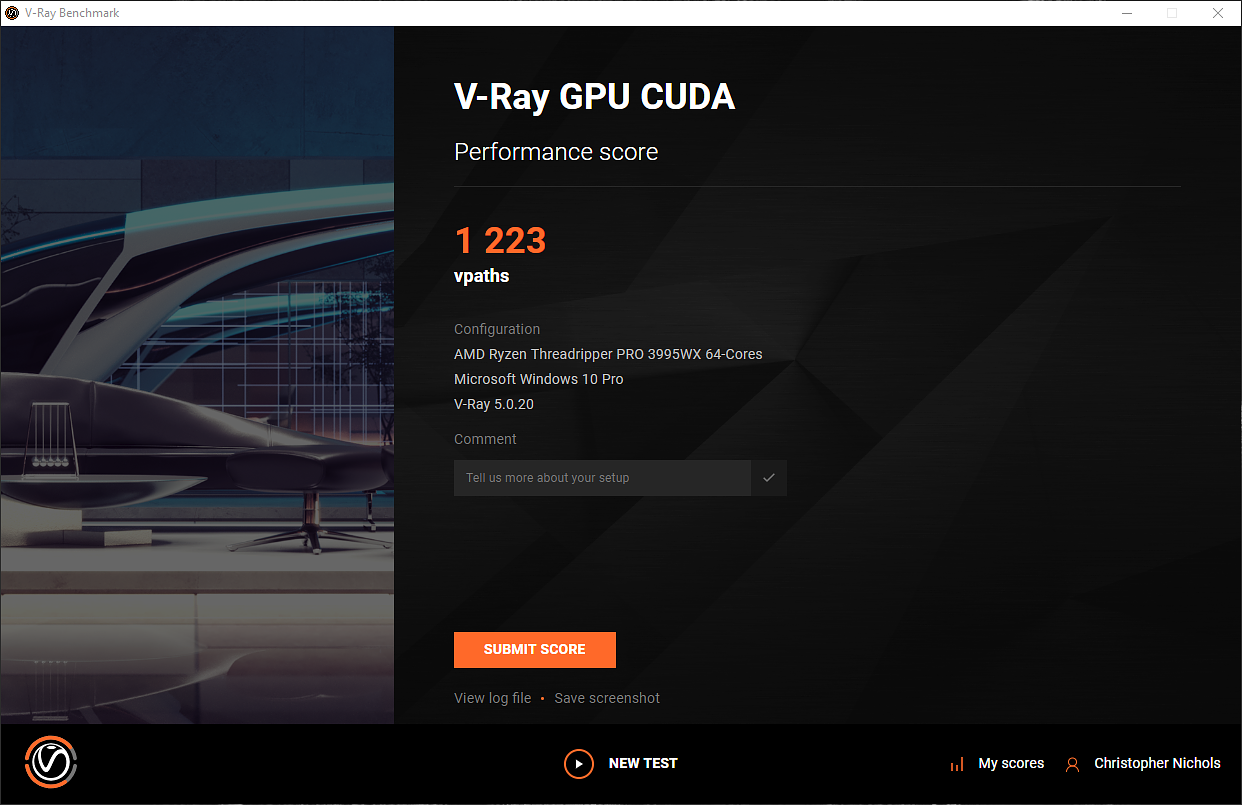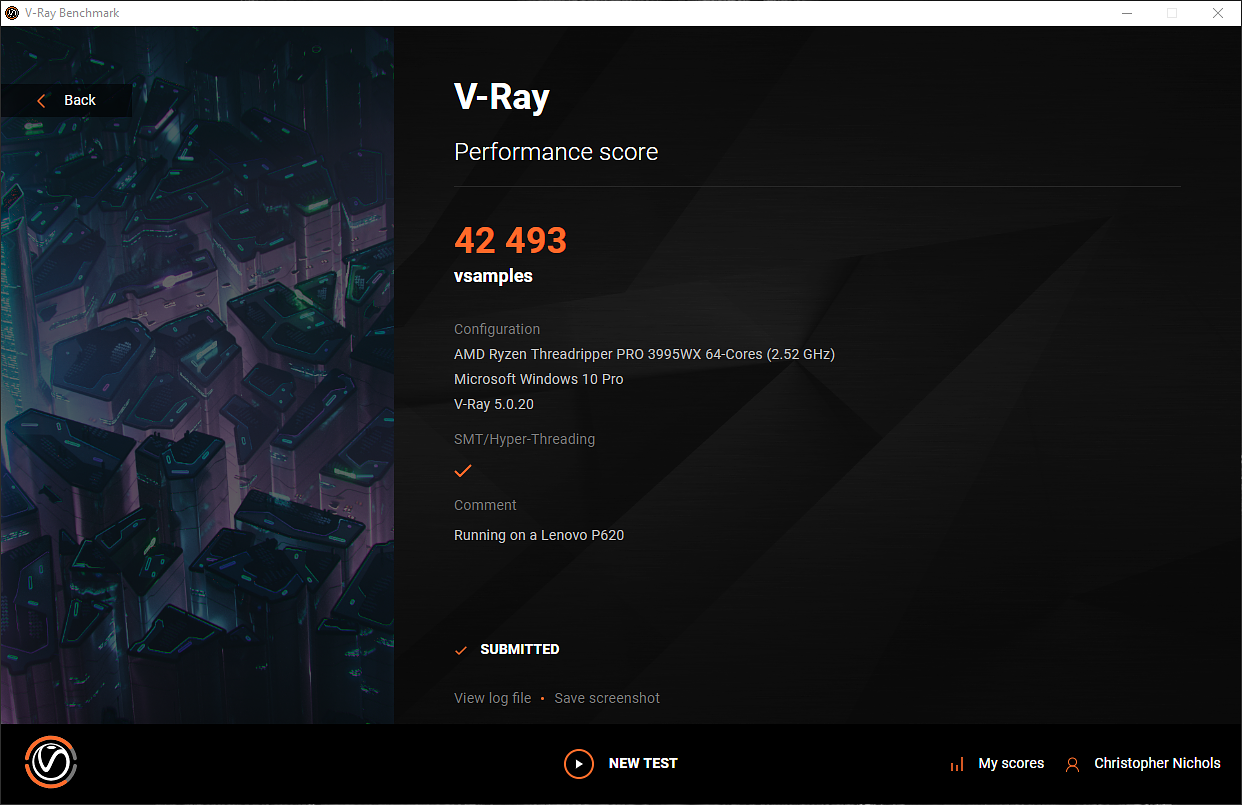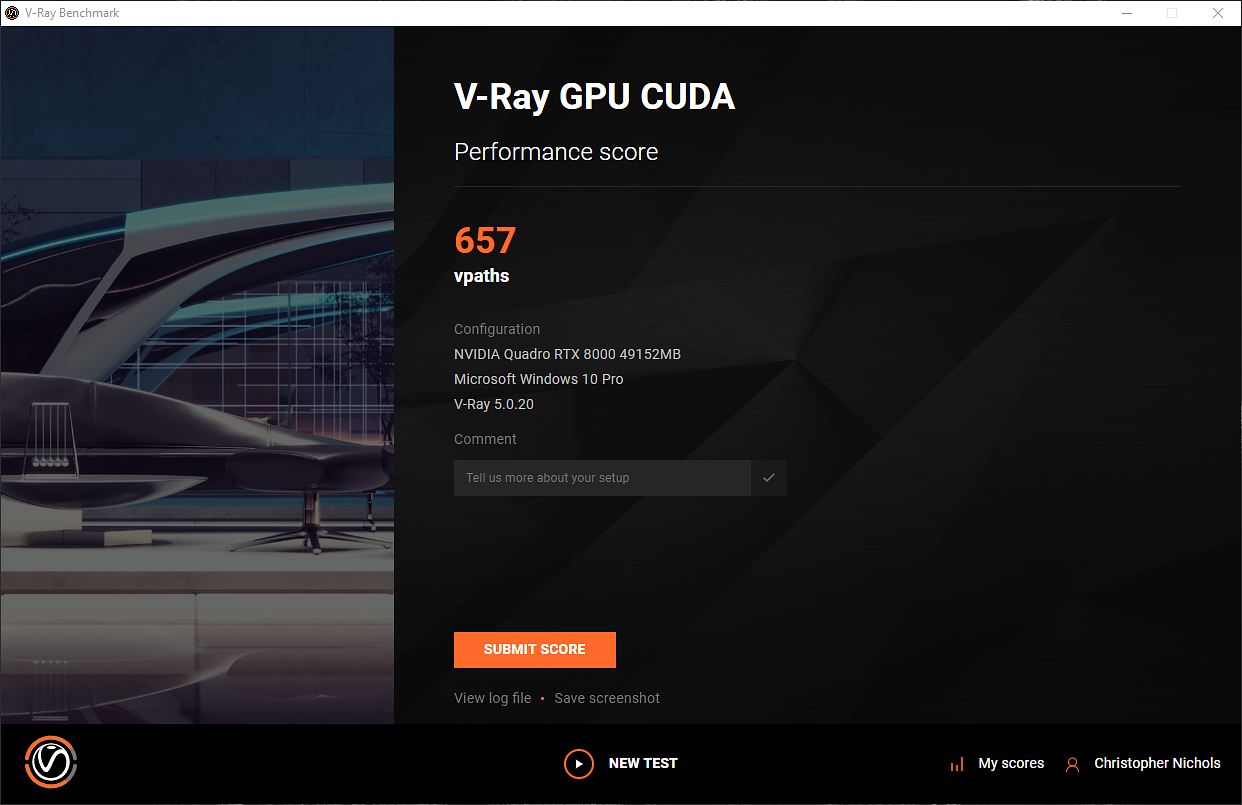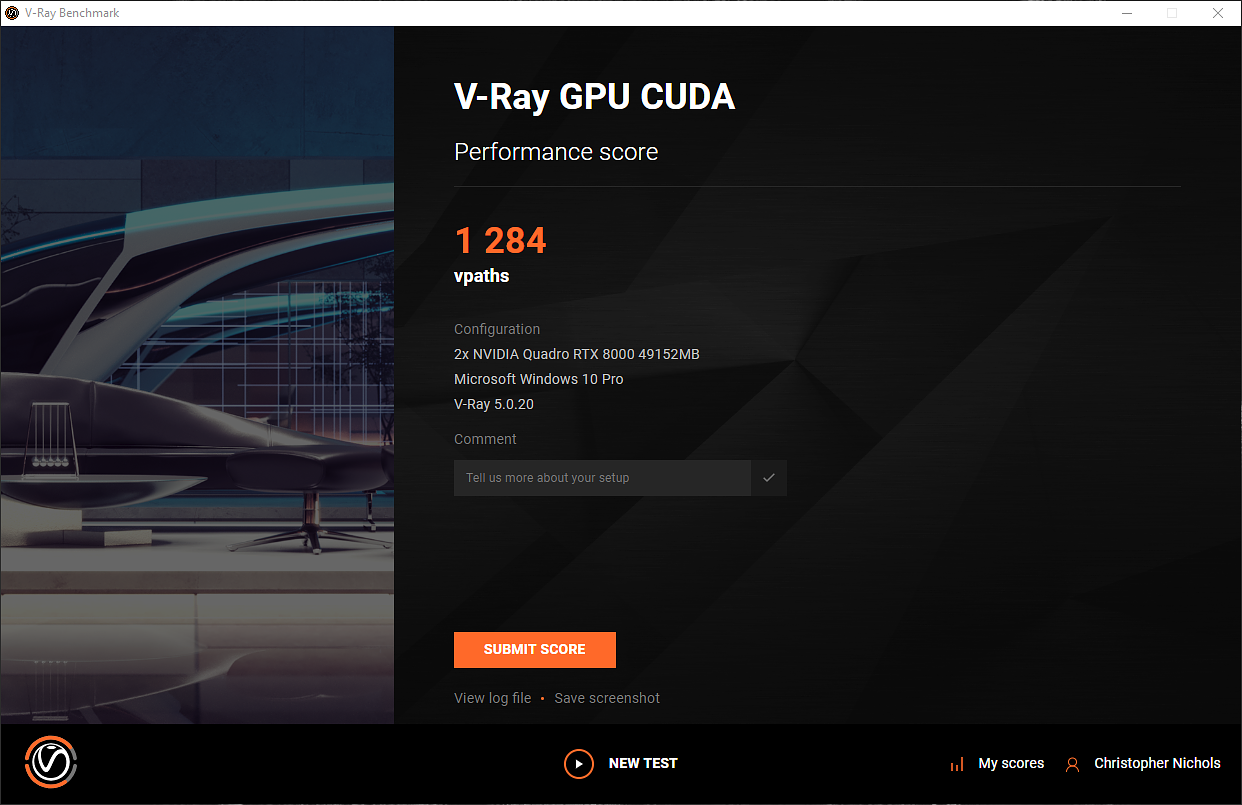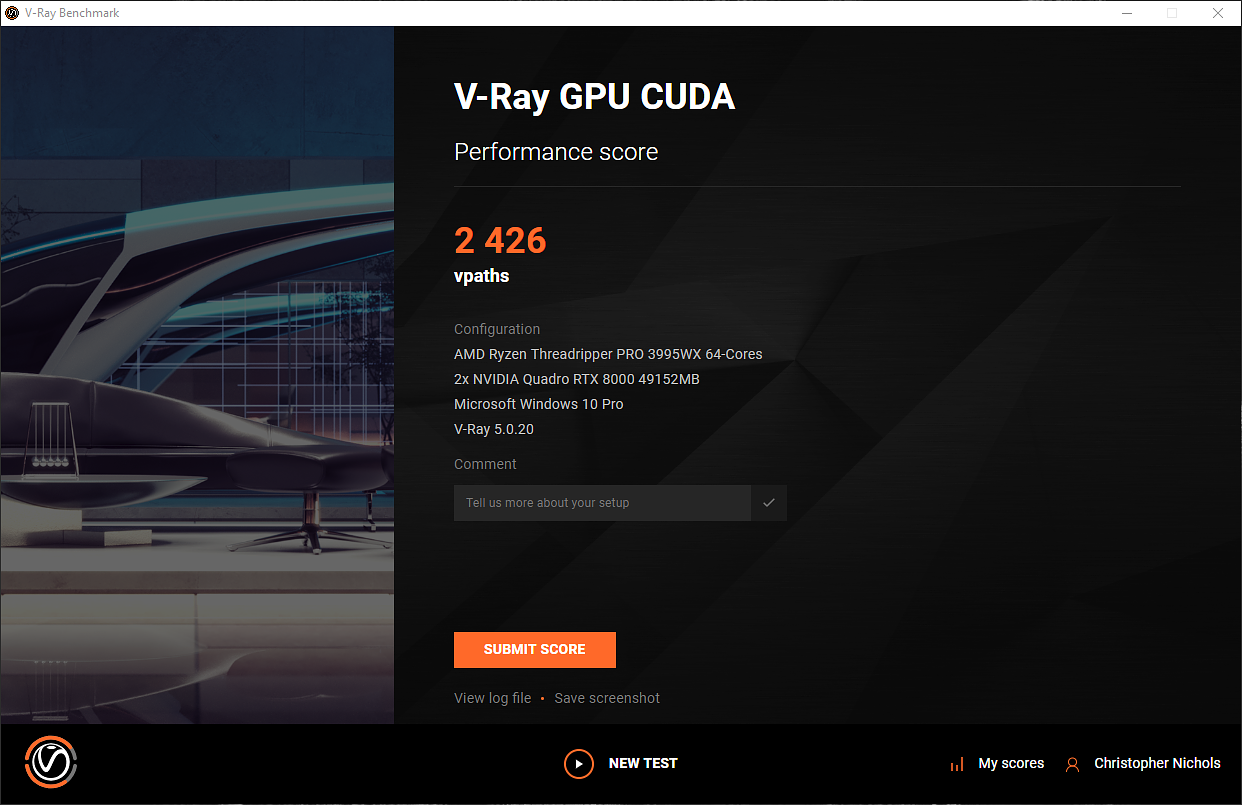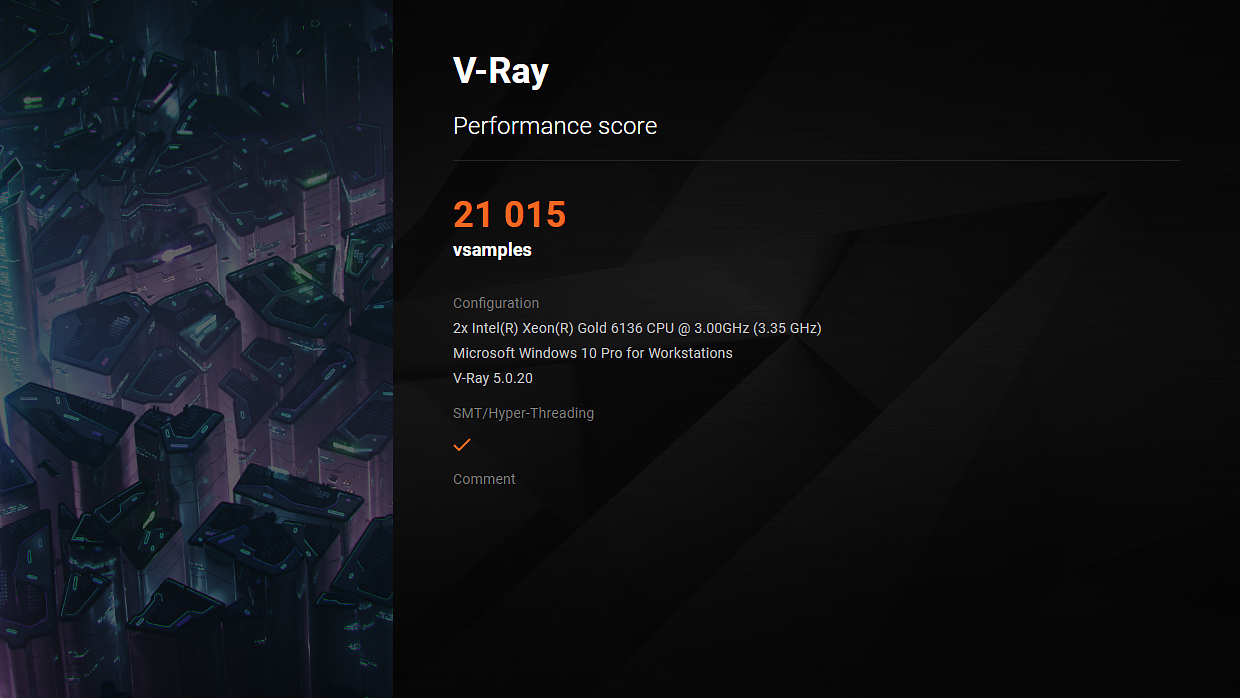
Other
Why AMD Ryzen™ Threadripper™ PRO CPUs rewrite the rules of visualization
Editor's notes
Article brought to you by AMD
Jeff Mottle — Founder at CGarchitect
Available in Lenovo ThinkStation P620 workstations, AMD’s latest processors end the need to compromise between CPU core counts and high clock speeds
When choosing CPUs for their workstations, architectural professionals traditionally faced an insoluble dilemma. Lightly threaded applications like CAD and BIM tools benefit from high CPU clock speeds; heavily threaded applications like renderers and reality capture software benefit from large numbers of CPU cores. But you couldn’t have both. As core count rose, CPU clock speed fell dramatically. Worse still, each core provided incrementally less extra performance, even with highly threaded applications – while to reach very high core counts, two CPUs were required, greatly increasing the cost and power consumption of the machine.
Thanks to new AMD Ryzen Threadripper PRO CPUs, those days may finally be over. Available as part of Lenovo ThinkStation P620 professional graphics workstations, the four chips – the Ryzen Threadripper PRO 3995WX, 3975WX, 3955WX and 3945WX – provide an unprecedented combination of high clock speeds and high core counts. The entry-level Ryzen™ Threadripper™ PRO 3945WX is the first twelve-core workstation CPU with a base clock speed of 4.3GHz or higher. [1] , while the 3995WX is the first workstation processor to offer 64 cores in a single CPU socket: more than twice the total core count of rival dual-socket systems. [2]
Not only that, but as the first professional workstation processors to support PCIe 4.0, the Threadripper™ PRO CPUs enable artists and architects to benefit from the full power of the Lenovo ThinkStation P620 components: from top-of-the-range workstation GPUs for hardware-accelerated ray tracing to blazing-fast data retrieval from its solid state drives.
Ryzen Threadripper PRO: a breakthrough in CPU design
Since 2017, Ryzen Threadripper CPUs have been disrupting the industry with a combination of high core counts and affordable prices, winning converts among architecture and design professionals. But with the Threadripper PRO processors, AMD has made its most significant set of technical advances since launching the product family.
First, as the first workstation-class CPUs built on a 7nm manufacturing process, the “Zen 2” based chips provide double the transistor density [3] of previous AMD architecture. Second, rather than forcing more and more cores onto the same CPU die, the Threadripper PRO processors break them into multiple eight-core ‘chiplets’, tied to one another and to system memory via AMD Infinity Fabric™ technology.
As a result, CPU clock speed now diminishes much more slowly as CPU core count rises. Put simply, the Threadripper PRO chips offer more cores at higher base frequencies than the workstation industry has ever seen [3] – and they do so within a single physical processor.
High CPU clock speeds accelerate CAD and BIM software
For modeling and design workflows, whether you’re working in 2D or 3D, the main benefit of the Threadripper PRO CPUs will be their high base clock speeds.
“CAD applications are usually single-threaded,” says Chris Ruffo, Worldwide Segment Manager for Architecture, Engineering and Product Development at Lenovo. “Many require additional cores for certain tasks, but it’s usually clock speed that determines overall performance.”
The same applies to BIM software. In AMD’s own tests using the standard RFO Benchmark, which measures the time taken by a workstation to open and edit a model in Autodesk Revit, the Ryzen Threadripper PRO 3945WX was up to 25% faster than Intel the Xeon W-3275 processor.
And the fact that those high clock speeds are available across 12 or more CPU cores means that users can have other essential software like browsers, email clients and videoconferencing services open at the same time as their design applications, without performance suffering – particularly important in a world where more people are working from home.
“Tools for visual communication can place tremendous strain on graphics performance,” points out Ruffo. “Running [Microsoft] Teams in conjunction with other [applications] in the background, you need more than a single core or a few cores with a high clock speed.”
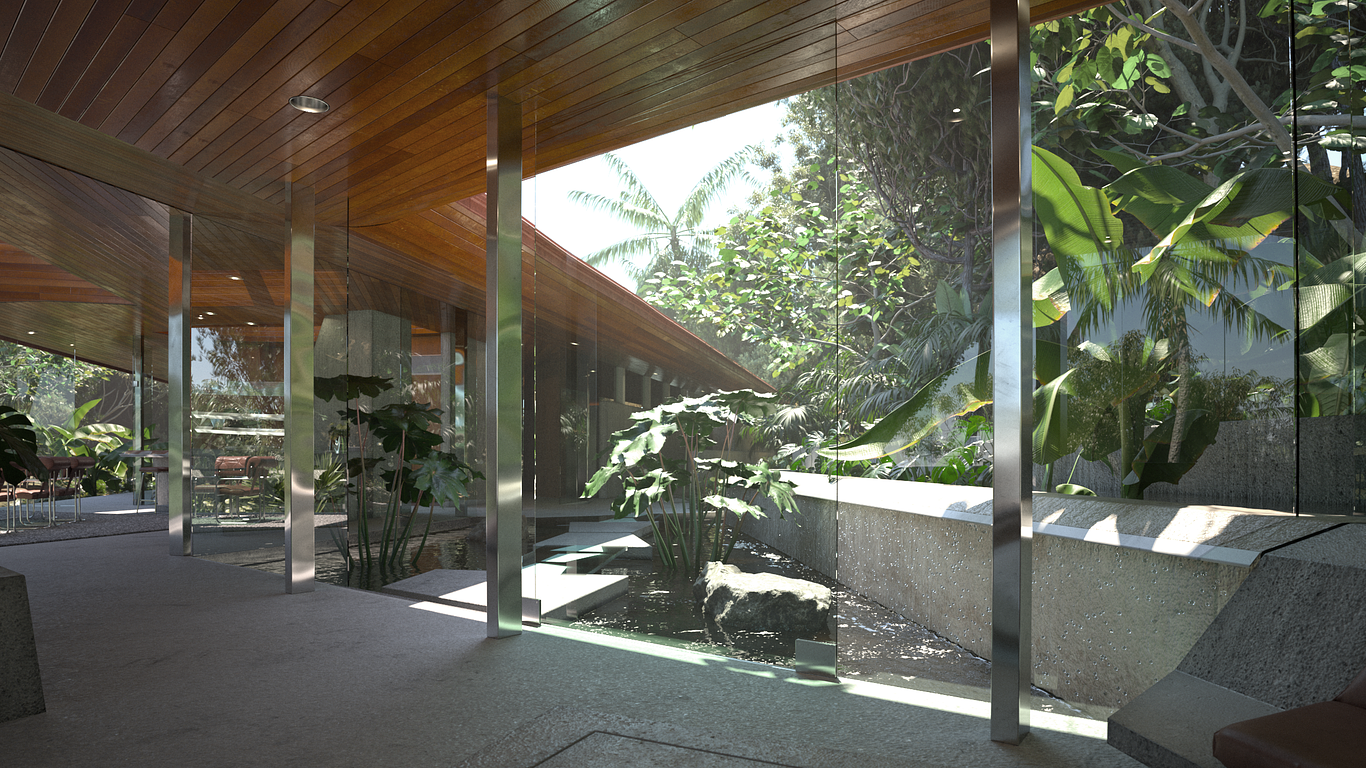
High core CPU counts power rendering and VR workflows
For heavily threaded applications, the high core counts are what makes the Threadripper PRO chips – particularly the 64-core Threadripper PRO 3995WX – really shine.
That includes a range of key architectural tools, including photogrammetry and reality capture software, game engines like Unreal Engine, where extra CPU cores accelerate tasks like scene building and light baking, and renderers like Chaos Group’s V-Ray.
“The CPU power [of a Lenovo ThinkStation P620 workstation equipped with a Threadripper PRO 3995WX] is the biggest I’ve used on any machine,” says Chris Nichols, Director of Chaos Group Labs. “This single-socket system beats most very expensive dual-socket machines [5].”
In Nichols’ tests, using Chaos Group’s own V-Ray Benchmark, the Lenovo ThinkPad P620 with its single Threadripper PRO 3995WX CPU easily outperformed a system with two Intel Xeon Gold 6136 CPUs, as seen in above.
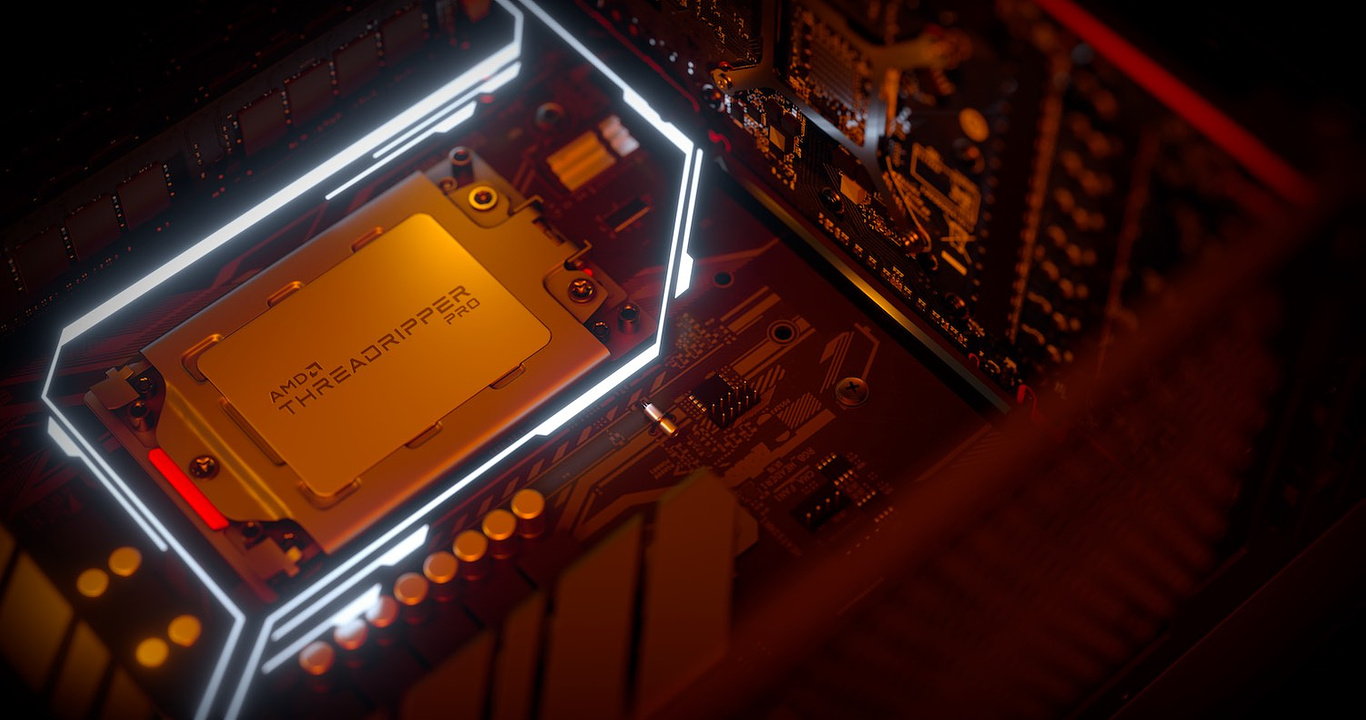
Powerful connectivity, data security and system management features
But rendering doesn’t have to be an either/or choice between CPU and GPU. Thanks to the Threadripper PRO CPU support for PCI Express 4.0, applications like V-Ray can make use of the full processing power of both the CPU and of the modern workstation graphics cards available in the Lenovo ThinkStation P620.
Not only does PCIe 4.0 offer twice the peak data transfer rate of the previous PCIe® 3.0 standard, but the Threadripper PRO processors provide 128 PCIe 4.0 lanes, meaning that multiple GPUs or SSDs – the Lenovo ThinkStation P620 supports up to four GPUs and up to six storage drives – can run with full electrical connectivity, ensuring that each performs to its full potential.
Large architectural practices also benefit from the security and remote management features Threadripper PRO offers. When working on commercially sensitive construction projects, AMD Memory Guard provides real-time encryption of system memory, helping to protect data if a machine is lost or stolen, while the AMD PRO manageability feature set enables IT staff to monitor, update and repair systems remotely, making it possible to support artists located in other offices around the world, or who are working from home.
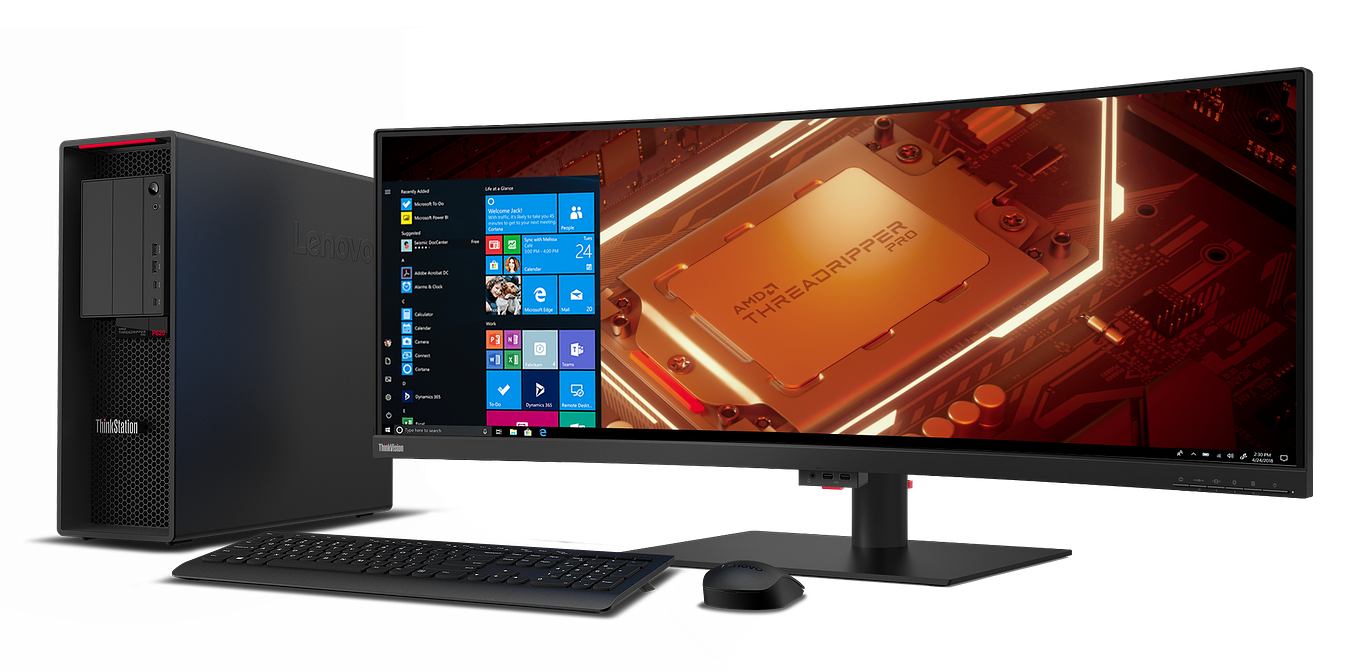
Design and visualize without compromise
With full-spectrum compute capabilities boosting performance in both lightly threaded and multithreaded tasks, high-speed connectivity with next-generation GPUs and SSDs via PCIe 4.0, and professional security and system management features, AMD Ryzen Threadripper PRO CPUs provide architects and visualization artists with the power they need to tackle the most demanding of design projects, all in one single-socket workstation.
The Lenovo ThinkStation P620 – the first ever ThinkStation P Series system to feature AMD CPUs – complements those capabilities with up to 512GB of 3200MHz DDR4 memory, up to 20TB of storage, and a choice of up to four professional AMD or NVIDIA graphics cards.
“The high core count [of the Ryzen Threadripper PRO CPUs], combined with the clock speed, has opened up new possibilities for architects, designers and engineers,” says Lenovo’s Chris Ruffo. “Users don’t have to compromise: a single machine can do just about everything for them, from CAD to rendering and virtual reality. Visualizers can really have their cake and eat it too.”
[1] Based on AMD internal analysis June 1, 2020, comparing specifications of AMD Ryzen™ Threadripper™ PRO to Intel Xeon Gold 6256 and Intel Xeon W-2265. CPP-01
[2] Based on AMD internal analysis June 1, 2020, comparing specifications of AMD Ryzen™ Threadripper™ PRO to Intel Xeon Gold 6256 and Intel Xeon W-2265. CPP-01. The AMD Ryzen™ Threadripper™ PRO 3995WX has up to 64 cores compared to the highest core count Intel Xeon Scalable workstation processor, the 8280 at 28-cores. CPP-03.
[3] Based on June 8, 2018 AMD internal testing of same-architecture product ported from 14 to 7 nm technology with similar implementation flow/methodology, using performance from SGEMM. EPYC-07.
[2] Based on AMD internal analysis June 1, 2020, comparing specifications of AMD Ryzen™ Threadripper™ PRO to Intel Xeon Gold 6256 and Intel Xeon W-2265. CPP-01. The AMD Ryzen™ Threadripper™ PRO 3995WX has up to 64 cores compared to the highest core count Intel Xeon Scalable workstation processor, the 8280 at 28-cores. CPP-03.
[3] Based on June 8, 2018 AMD internal testing of same-architecture product ported from 14 to 7 nm technology with similar implementation flow/methodology, using performance from SGEMM. EPYC-07.
[4] Based on AMD performance lab testing on June 8, 2020 using the Autodesk Revit RFO v3.2 2020 test to compare the performance of AMD Ryzen Threadripper PRO 3945WX vs. Intel Xeon W-3275 processor. Results may vary. CPP-70.
[5] Based on testing by AMD performance labs on June 8, 2020 using the Chaos Group V-Ray benchmark to test the performance of the Ryzen Threadripper PRO 3995WX reference system versus two (2) Intel Xeon Platinum 8280 processors. Results may vary. CPP-32
* Max boost for AMD processors is the maximum frequency achievable by a single core on the processor running a bursty single-threaded workload. Max boost will vary based on several factors, including, but not limited to: thermal paste; system cooling; motherboard design and BIOS; the latest AMD chipset driver; and the latest OS updates. GD-150.
You must be logged in to post a comment. Login here.
About this article
Available in Lenovo ThinkStation P620 workstations, AMD’s latest processors end the need to compromise between CPU core counts and high clock speeds
visibility4.28 k
favorite_border0
mode_comment0


